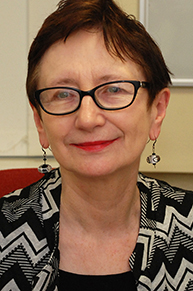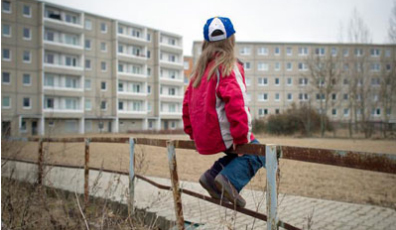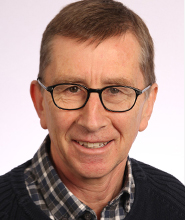Child Welfare Inequalities project makes stark reading

Tue, 14 Mar 2017 16:22:00 GMT
Professor Brid Featherstone was key player in a UK-wide project investigated data on 35,000 children either ‘looked after in care’ or on a child protection plan
 A STUDY by experts at seven British universities has revealed significant inequalities in child welfare across the UK, with children in the poorest areas 10 times more likely than those in the least deprived to become involved in the child protection system. The role of Brid Featherstone (pictured right), the University of Huddersfield’s Professor of Social Work, is to ensure that the research and its findings have maximum impact across England, Scotland, Wales and Northern Ireland.
A STUDY by experts at seven British universities has revealed significant inequalities in child welfare across the UK, with children in the poorest areas 10 times more likely than those in the least deprived to become involved in the child protection system. The role of Brid Featherstone (pictured right), the University of Huddersfield’s Professor of Social Work, is to ensure that the research and its findings have maximum impact across England, Scotland, Wales and Northern Ireland.
Professor Featherstone is a member of the team from the universities of Huddersfield, Coventry, Sheffield, Cardiff, Edinburgh, Stirling and Queen’s in Belfast that carried out the Child Welfare Inequalities Project. It investigated data on over 35,000 children who are either “looked after” in care (LAC) or on a child protection plan (CPP).
A London conference co-organised by Professor Featherstone revealed the key findings:
- children in the most deprived 10% of neighbourhoods in the UK are 10 times more likely to be in care than children in the least deprived 10%;
- across the UK, each step increase in deprivation brings a rise of around a third in a child’s chances of being in care;
- in all countries children are over-represented in the most deprived 20% of neighbourhoods, particularly so in Northern Ireland;
- around one in 60 children is in care in England’s most deprived neighbourhoods, compared with one in 660 in the least deprived area;
- in the most deprived neighbourhoods in England, LAC rates for white children were five times higher than for Asian children and 75% higher than for black children.
 The fact that a large proportion of the most deprived children were taken into care was already widely recognised, said Professor Featherstone.
The fact that a large proportion of the most deprived children were taken into care was already widely recognised, said Professor Featherstone.
“But there hasn’t been good quality research. Now, this data confirms what people have been saying anecdotally. Most importantly, the results say to the Government, ‘don’t you think we should be looking at this?’”
Health inequality is established as an important part of the Government’s agenda, continued Professor Featherstone.
“Child welfare is another area of inequality, but it doesn’t receive the same attention,” she said. Now it is hoped that the findings of the Child Welfare Inequalities Project will place the issue firmly on the agenda.”
The two-year project has received funding of £557,705 from the Nuffield Foundation. Researchers, led by Professor Paul Bywaters of Coventry University, drilled down below local authority (LA) level in England and Scotland, discovering that children living in equivalent neighbourhoods – whether highly deprived or not – in different LAs have starkly different chances of being in care, with low deprivation LAs around 50% more likely to intervene.
 Although it was beyond the remit of the study to analyse why this was happening, researchers say the likely explanation is that – relative to demand – more deprived LAs have fewer resources to allocate to children’s services.
Although it was beyond the remit of the study to analyse why this was happening, researchers say the likely explanation is that – relative to demand – more deprived LAs have fewer resources to allocate to children’s services.
Professor Bywaters (pictured right) said: “We’ve known for years that child abuse and neglect is linked to poverty, but there’s been a fundamental gap in our understanding of how a child’s family circumstances, and neighbourhood deprivation or locality impacts their chances of the state intervening to improve their life chances. This is partly because, extraordinarily, no data is systematically collected and published about the socio-economic background of the families whose children are involved with the child welfare system. Our study puts in place some strong foundations to build on and change that.”
The University of Huddersfield’s Professor Featherstone took the lead role on making sure project makes an impact.
“My job was to make sure that across the four countries of the UK we engaged all the key stakeholders. At governmental level and practice level we arranged a range of activities. Also, I have been thinking about how we can tell the story of this research in a way that makes an impact and we will be continuing with this for some time.”







